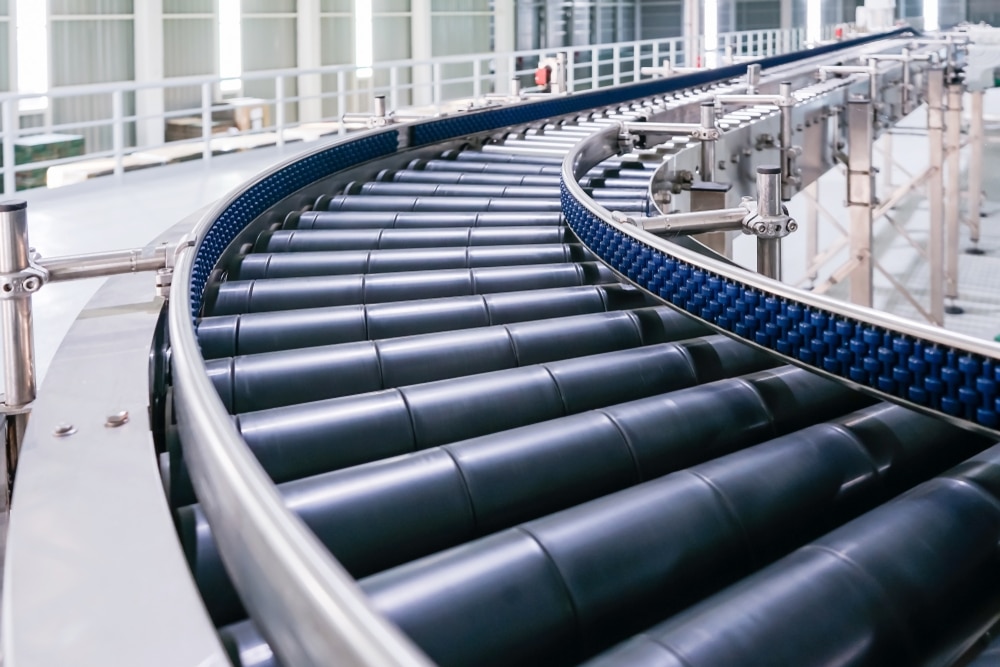Sludge conveyor systems are adaptable equipment built to move materials that are high in water and low in solid content. They are capable of moving challenging materials through difficult environments, such as up and down inclines or around corners. A sludge conveyor consists of a power source, a trough, and either rotating helical screw blades or a conveyor belt. These systems can be constructed in varying inclines and diameters from a range of materials, such as stainless steel, abrasion-resistant alloys, and more.
Sludge conveyor uses span multiple industries and there are two primary conveyor types used in these applications: belt conveyors and screw conveyors. Choosing the best type of sludge conveyor system depends on the material being transported and its consistency.
Belt Conveyors vs Screw Conveyors
When deciding between a belt conveyor and a screw conveyor, it is important to consider the application and the type of sludge being transported. While some applications are compatible with either type, certain situations require a screw conveyor system.
For example, within the wastewater treatment industry, dewatered biosolids result in sludge that is 15-30% dried solid. For this type of sludge, either a belt conveyor or screw conveyor may be used. However, other wastewater treatment applications remove up to 95% of the biosolids’ water content, resulting in a dry product. In these instances, screw conveyors are best.
There are some key differences between these two types of sludge conveyor systems. For example, screw conveyors are completely enclosed, providing an additional safety measure and helping with odor control. Additionally, screw conveyors function vertically. Belt conveyors have more limited incline capabilities but work well in long-distance applications.
Screw conveyors require fewer bearings than belt conveyors and can be used in hopper live bottom applications. However, they are not ideal for handling stringy materials, as these can tangle around shafts or hanger bearings. Additionally, screw conveyors can shear through the material, potentially altering its consistency, whereas belt conveyors move sludge without disturbing or mixing it during transport.
Industries That Use Belt and Screw Conveyors
Sludge conveyor uses vary across industries. Wastewater treatment plants rely on belt conveyors for long-distance transport and screw conveyors for dewatered sludge. The mining industry depends on screw conveyors for slurry and belt conveyors for dry bulk materials. In food processing, belt conveyors handle delicate items, while screw conveyors are better suited for sticky byproducts. Pharmaceutical and chemical industries favor screw conveyors due to their enclosed design, ensuring contamination-free transport.
Factors to Consider When Choosing a Sludge Conveyor
Choosing the right sludge conveyor system depends on several factors, including material type, transport distance, space constraints, and maintenance requirements. Screw conveyors are better for sticky or high-moisture sludge and can handle steep inclines, while belt conveyors are ideal for dry materials and long horizontal transport. Space limitations may make compact screw conveyors a better choice, whereas belt conveyors require more room but have fewer moving parts. Enclosed screw conveyors improve odor control and safety but may require more maintenance. Energy efficiency and cost should also be considered—belt conveyors often have lower operational expenses, while screw conveyors provide better containment.
Sludge Conveyors at Reinke & Schomann
Sludge conveyor systems are essential for transporting various materials and can be customized to meet the unique needs of different applications. Reinke & Schomann engineers and manufactures centerless, solid shaft mounted, and pipe or tube mounted screw conveyors in customizable styles and materials. To get started on your custom solution, request a quote today.


